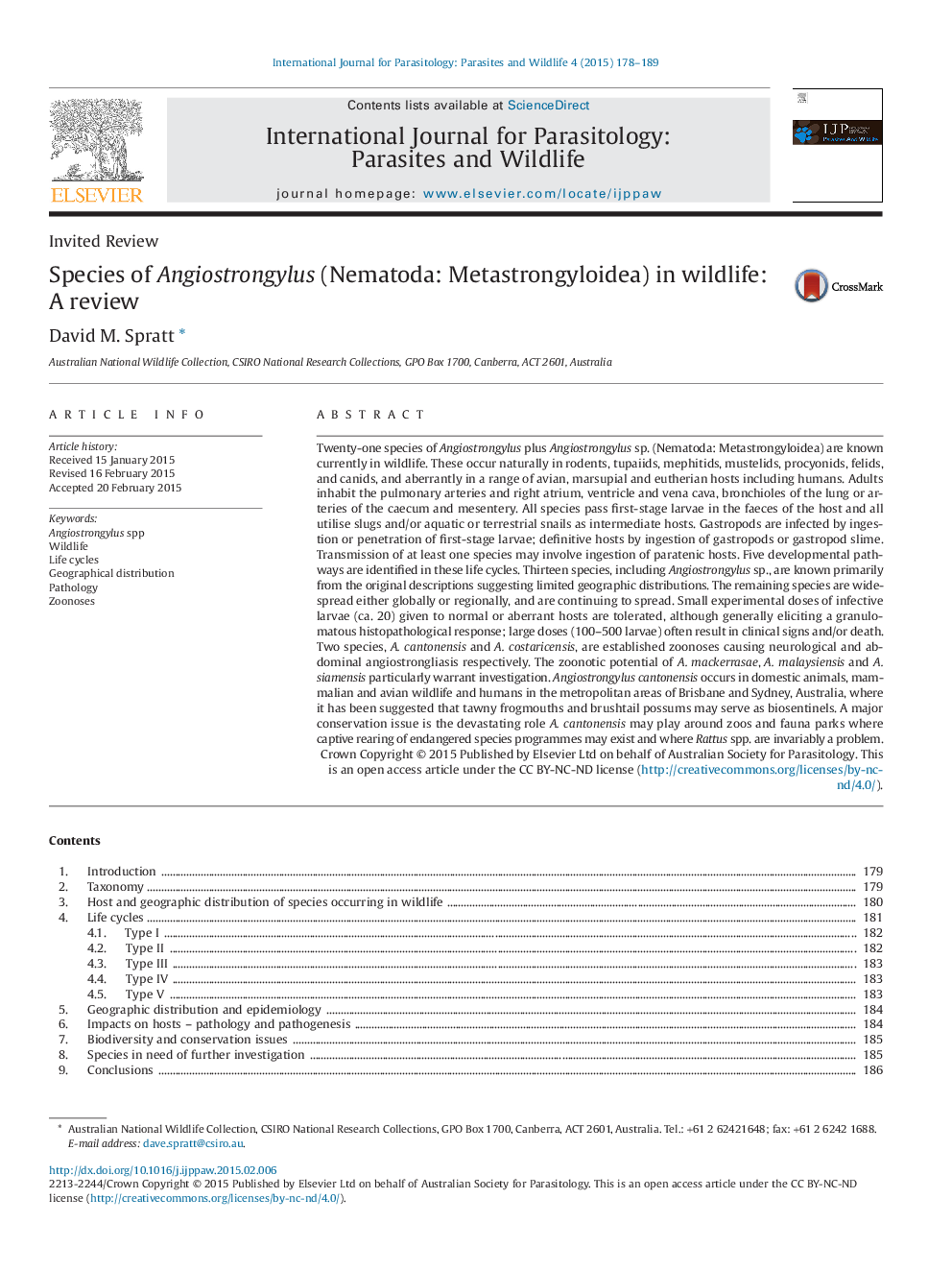| کد مقاله | کد نشریه | سال انتشار | مقاله انگلیسی | نسخه تمام متن |
|---|---|---|---|---|
| 2055258 | 1075737 | 2015 | 12 صفحه PDF | دانلود رایگان |

• Twenty-one species of Angiostrongylus are recognised from wildlife around the world.
• Details of hosts, life cycles, pathogenesis, geographical range are known for nine.
• Six species are spreading into new regions locally or globally.
• Two species, A. cantonensis and A. costaricensis, are zoonotic.
• A. mackerrasae, A. malaysiensis and A. siamensis are potentially zoonotic.
• Debilitating disease occurs in avian and mammalian wildlife and humans in Australia.
Twenty-one species of Angiostrongylus plus Angiostrongylus sp. (Nematoda: Metastrongyloidea) are known currently in wildlife. These occur naturally in rodents, tupaiids, mephitids, mustelids, procyonids, felids, and canids, and aberrantly in a range of avian, marsupial and eutherian hosts including humans. Adults inhabit the pulmonary arteries and right atrium, ventricle and vena cava, bronchioles of the lung or arteries of the caecum and mesentery. All species pass first-stage larvae in the faeces of the host and all utilise slugs and/or aquatic or terrestrial snails as intermediate hosts. Gastropods are infected by ingestion or penetration of first-stage larvae; definitive hosts by ingestion of gastropods or gastropod slime. Transmission of at least one species may involve ingestion of paratenic hosts. Five developmental pathways are identified in these life cycles. Thirteen species, including Angiostrongylus sp., are known primarily from the original descriptions suggesting limited geographic distributions. The remaining species are widespread either globally or regionally, and are continuing to spread. Small experimental doses of infective larvae (ca. 20) given to normal or aberrant hosts are tolerated, although generally eliciting a granulomatous histopathological response; large doses (100–500 larvae) often result in clinical signs and/or death. Two species, A. cantonensis and A. costaricensis, are established zoonoses causing neurological and abdominal angiostrongliasis respectively. The zoonotic potential of A. mackerrasae, A. malaysiensis and A. siamensis particularly warrant investigation. Angiostrongylus cantonensis occurs in domestic animals, mammalian and avian wildlife and humans in the metropolitan areas of Brisbane and Sydney, Australia, where it has been suggested that tawny frogmouths and brushtail possums may serve as biosentinels. A major conservation issue is the devastating role A. cantonensis may play around zoos and fauna parks where captive rearing of endangered species programmes may exist and where Rattus spp. are invariably a problem.
Graphical AbstractFigure optionsDownload as PowerPoint slide
Journal: International Journal for Parasitology: Parasites and Wildlife - Volume 4, Issue 2, August 2015, Pages 178–189